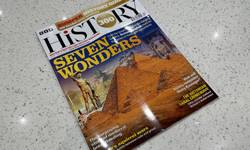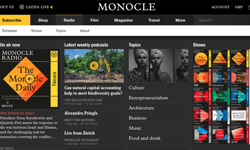Increasingly, these moves – and their management structures – also reflect strategies designed to achieve heretofore elusive international integration, to tap revenue opportunities around the world.
Obvious case in point: The recent dismantling of Hearst Magazines International (HMI), in favour of consolidating the magazine division’s global operations under the oversight of US-based executives in president David Carey’s tight C-suite team.
Given their ascension and high visibility in recent years, it’s doubtful that many were surprised that Troy Young, president of digital, and Michael Clinton, president of marketing and publishing director, have now had their purviews formally extended worldwide. In addition, financial operations have been consolidated globally, under US-based SVP and CFO Debi Chirichella. (As InPublishing readers are no doubt well aware, while HMI chief Duncan Edwards will leave at year’s end, other key HMI executives and staff are being integrated into the new structure, with some getting new or expanded responsibilities, according to Carey’s internal memo.)
Hearst, of course, was an aggressive pioneer of international media expansion, and it’s grown substantially even since its 2011 acquisition of 100-plus Lagardère properties. Carey hired Young in 2013 to architect the technology, content and marketing and advertising infrastructures and teams to enable true global integration on all fronts, and Young has delivered. Hearst had an integrated media and operating system in place in the US by 2014, and it’s now rolling that out across its 300-plus brands in 46 markets, as detailed by Digiday. The system is designed for efficient sharing of appropriate digital content across titles and regions. And it provides a turnkey solution for entering previously difficult-to-crack markets, via digital-only products run by lean editorial and advertising teams. In addition, Hearst now has a ‘Core Audience Group’ focused on using data and programmatic tech for native advertising programs – capabilities that it presumably intends for all markets, not just the US.
Time Inc
The parallels at Time Inc are unmistakable. In January, the company named Steve Marcopoto to the newly created position of president, Time Inc International. His mission, in the company’s words: “expanding Time Inc’s business portfolio in international markets through digital, video and TV platforms, partnerships, acquisitions, licensing and commerce.”
Recent moves in this direction have included a partnership to extend the lucrative Essence Festival to South Africa; Time Inc UK’s acquisition of UK Cycling Events; and the launch of a US edition of Wallpaper.
Eric Danetz, named SVP and group publisher of Time Inc International in May, noted to Folio: that Time Inc UK, the former IPC, has “always been a big part of our business, but it was kind of separate in that it lived overseas. International was very focused on international, and the domestic business was very focused on domestic… the current media landscape and everything that we’re doing, it’s all become more global. It made more sense to tie in the various divisions across the board.”
He continued: “Most of our international operations have been based in the UK, and in Hong Kong and Singapore, but we have 77 different editions in 170 countries and 19 languages. There really wasn’t a conduit in New York for international business. The reality is, for global brands now, New York is the epicentre for where media is happening and brands are placing their media… we’ve got over 150 million people coming to our digital platforms, 120 million-plus in print and over 200 million on social – how are we leveraging that on a global basis?” Time Inc can now create programs for global marketers to reach target audiences through its platforms, and also through place-based events (via events company inVNT, acquired in 2015), he said. “Taking a look at our overall capabilities and leveraging that on a global basis is what we’re able to do as an international division within Time Inc.”
Condé Nast
The latest big systemic developments at Condé Nast also sound like they’re meant (soon, if not currently) to facilitate international, as well as US, advertising. I refer to Condé Nast Spire, which combines actual purchase data from 2015-acquired 1010data and Condé Nast’s first-party behavioural data. This enables building “highly accurate microsegments focused on advertisers' business goals," and creating advertiser content customised for those segments, says the company. (I’m not sure which is scarier – that Condé is boasting that it collects one trillion new data points per month, or that it now knows things like this: People who are heavier watchers of humour, design and political videos are more likely to buy computers, and they’ll buy computers 25% sooner if fed recommendations and reviews.)
Only time will tell how successful these and many other impressive technological and marketing advancements will be at enabling these leading “legacy” media companies to survive and thrive as Facebook and Google continue to increase their already huge shares of advertising spending, even as increasingly alarmed media companies supply these platforms’ content-fuel. Obviously, expanding non-advertising revenue channels and opening new markets are critical. And some – like Matt McAlister, in the Guardian – have argued that publishers must band together to form an advertising network of scale to fight the mega-platforms. (The leading German publishers are already pooling their data for that purpose.)
Having invested so much in developing and acquiring their own digital capabilities to leverage their scale advantages, I don’t see Hearst, Time Inc or Condé Nast being eager to participate in a broadly-based, multi-publisher advertising network. But it wouldn’t be shocking if they engaged in some careful data sharing or other new collaborations among themselves. It certainly wouldn’t be the first time they’ve cooperated when it’s mutually beneficial, and with outside threats gathering, circling the wagons might look like one possible option.












